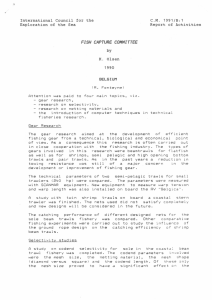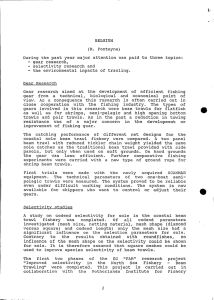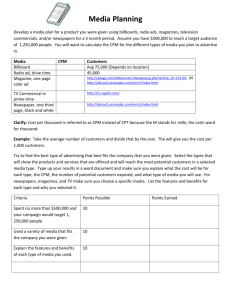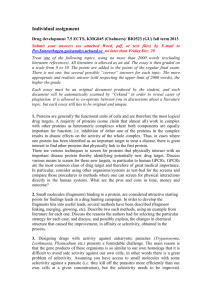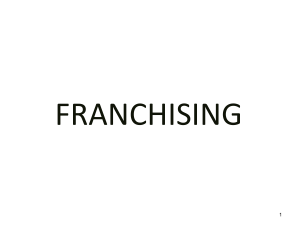Document 12417241
advertisement
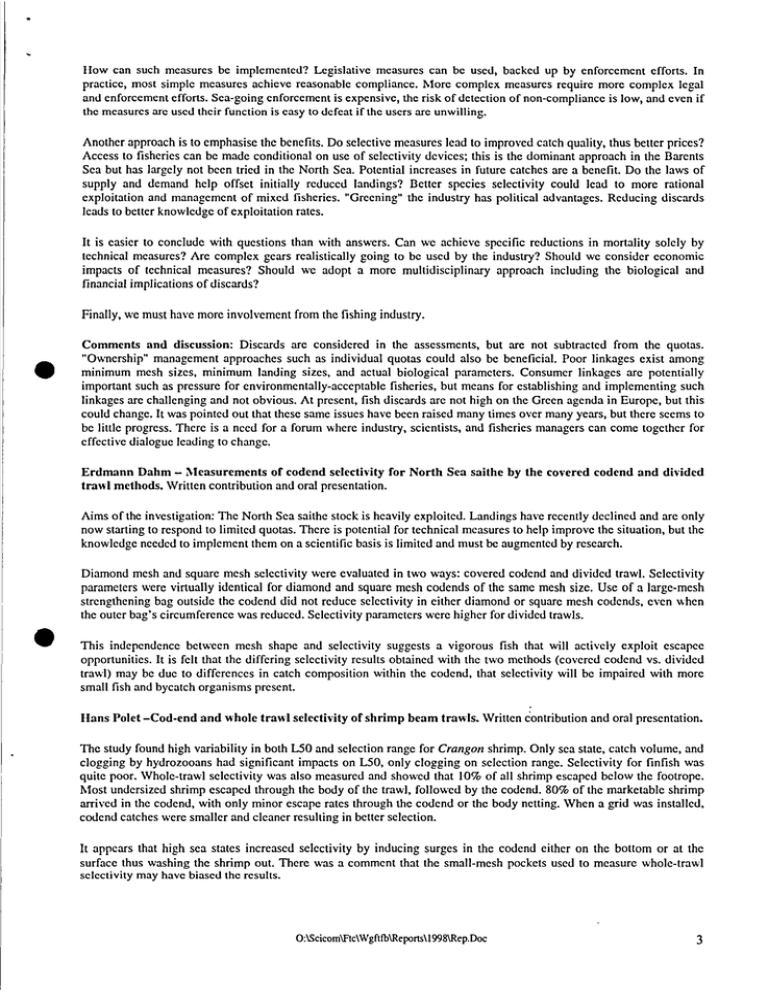
lIow can such measures be implemented? Legislative measures can be used, backed up by enforcement efforts. In praclice, most simple measures achieve reasonable compliance. More complex measures require more complex legal and enforcement efforts. Sea-going enforcement is expensive, the risk of detection of non-compliance is low, and even if the measures ure used their function is easy to defeat if the users ure unwilling. Another approach is to emphasise thc benefits. 00 selective measures lead to improved catch quality, thus better prices? Access to fisheries can be made conditional on use of selectivity devices; this is the dominant approach in thc Earents Sea but has largely not been tried in the North Sea. Potential increases in future catches are a benefit. 00 the laws of supply and demand hclp offset initially reduced landings? Eetter species selectivity could lead to more rational exploitation and management of mixed fisheries. "Greening" the industry has political advantages. Reducing discards leads to better knowlcdge of exploitation rates. It is easier to conclude with questions than with answers. Can we achieve specific reductions in mortality solely by technical measures? Are complex gears realistically going to be used by the industry? Should we consider cconomic impacts of tcchnical measures? Should we adopt a more multidisciplinary approach including the biological and financial implications of discards? Finally, we must have more involvement from the fishing industry. • Comments and discussion: Discards are considered in the assessments, but are not subtracted from the quotas. "Ownership" management approaches such as individual quotas could also be beneficial. Poor linkages exist among minimum mesh sizes, minimum landing sizes, and actual biological parameters. Consumer linkages are potentially important such as pressure for environmentally-acceptable fisheries, but means for establishing and implementing such linkages are challenging and not obvious. At present, fish discards are not high on the Green agenda in Europe, but this could change. It was pointed out that these same issues have been raised many times over many years, but there seems to be liule progress. There is a need for a forum where industry, scientists, and fisheries managers can come together for effective dialogue leading to change. Erdmann Dahm - ~Ieasurements of codend selectivity for North Sea saithe by the covcred codend and dh'ided trawl methods. Written contribution and oral presentation. Aims of the investigation: The North Sea saithe stock is heavily exploited. Landings have recently declined and are only now starting to respond to limited quotas. There is potential for technical measures to help improve the situation, but the knowledge needed to implement them on a scientific basis is limited and must be augmented by research. Diamond mesh and square mesh selectivity were evaluated in two ways: covered codend and divided trawl. Selectivity parameters were virtually identical for diamond and square mesh codends of the same mesh size. Usc of a large-mesh strengthening bag outside the codend did not reduce selectivity in either diamond or square mesh codends, even when the outer bag's circumference was reduced. Selectivity parameters were higher for divided trawls. This independence between mesh shape and selectivity suggests a vigorous fish that will actively exploit escapee opportunities. It is feit that the differing selectivity results obtained with the two methods (covered codend vs. divided trawl) may be due to differences in catch composition within the codend, that selectivity will be impaired with more small fish and bycatch organisms present. Hans Polet -Cod-end and whole trawl selecth'ity of shrimp beam trawls. Written contribution and oral presentation. The study found high variability in both L50 and selcction range for Crangon shrimp. Only sea state, catch volume, and clogging by hydrozooans had significant impacts on L50, only clogging on selection range. Selectivity for finfish was quite poor. Whole-trawl selectivity was also measured and showed that 10% of all shrimp escaped below the footrope. Most undersized shrimp escaped through the body of the trawl, followed by the codend. 80% of the marketable shrimp arrived in the codend, with only minor escape rates through the codend or the body netting. When a grid was installed, codend catches were smaller and cleaner resulting in better selection. It appears that high sea states increased selectivity by inducing surges in the codend either on the bottom or at the surface thus washing the shrimp out. There was a comment that the small-mesh pockets used to measure whole-trawl sclectivity may have biased the results. O:\Scicom\Ftc\Wgftfb\Reports\I998\Rep,Doc 3
